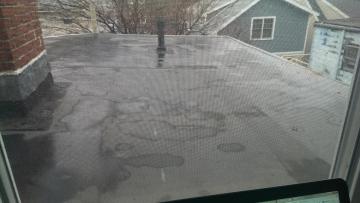Amazon founder Jeff Bezos took to 60 Minutes last night to announce that his company is in the early stages of a delivery-by-drone system.
You can read more about the idea here but the short version is that tiny helicopters will deliver five-pound-and-under packages to your door within 30 minutes, as long as you live within 10 miles of an Amazon distribution center. Bezos hopes to get the system up and running within the next five years or so, but admitted to Charlie Rose that he’s an optimist and that a lot of things would need to fall into place before such a system goes live.
Assuming Amazon Prime Air eventually launches, though, here are a handful of predictions about the system itself and delivery-by-drone systems in general.
Amazon won’t be the first to launch a consumer delivery-by-drone program at this scale.
You may recall the Domino’s Pizza “DomiCopter” concept that made the rounds earlier this year. Pizza by drone? Now we’re talking. And apparently China is well ahead of the U.S. in the delivery-by-drone department, with a company called SF Express reportedly testing a system “built for delivering packages to remote areas,” reports Quartz.
Here in the U.S., expect something like this Domino’s experiment to take off (pun intended) first. The stakes are much lower: We’re talking about mediocre pizza that in the event of a drone failure or mis-delivery can be redelivered by an actual driver relatively quickly. Domino’s has enough brick-and-mortar locations to provide a meaningful failsafe, in other words.
What happens if this Amazon drone botches your delivery? Will the company then send out a driver from its distribution center to hand-deliver the stick of deodorant you ordered or will the company simply apologize and ship it out normally?
UPS, FedEx and the USPS will complain about unfair competition.
Well, the USPS will definitely complain. If UPS and FedEx are smart, they’ll just build their own drones for delivering small packages. This type of system could conceivably work well for the USPS, of course, given that your daily mail delivery generally weighs less than five pounds, but I can’t imagine the post office pulling something like this together in a timely fashion. Especially a system that can reliably deliver postal mail to a secure location like a mailbox day after day. As for UPS and FedEx, you have to believe both these companies are either already working on delivery-by-drone systems or they’re seriously researching them.
One bad delivery will make for big headlines and an even bigger PR nightmare.
Mark my words: Amazon will make thousands of drone deliveries without incident, and then one drone will drop a package in a swimming pool or, as Bezos worries, hit someone in the head and it’ll be endless fodder for news outlets (ours included – sorry). Can’t you just see Congress getting involved, too? Summoning Bezos to Washington and eliciting dumbed-down explanations of how the Internet, e-commerce and delivery drones work?
People will get all whipped up about privacy.
Amazon may not have to deal with this too much if the first point I make up above comes true. People may be comfortable with delivery drones by the time Amazon Prime Air launches. But there will undoubtedly be a certain subset of people at some point in time who get bent out of shape about the idea of drones flying around and delivering packages. Though Amazon’s system sounds pretty much automated, it’s not far-fetched to think that some drone delivery systems from other companies might have an actual human on the other end guiding things. And you’d have to believe that Amazon would build in some sort of override function where a human could grab control of drones. The “Who’s spying on me?” question would always loom, no matter how automated a system like this gets.
City deliveries will be tough.

For the record, I buy a LOT of stuff from Amazon and I love the idea of this drone delivery system. But I’m trying to figure out how this would work for me. I live in the middle of Boston on a narrow street with a steep incline that’s blanketed overhead by power lines. There’s nowhere except a thin strip of sidewalk for a drone to drop a package in front of my house, yet we have a nice, enclosed breezeway for FedEx, UPS and the mailman to leave packages.
I have a tiny, tiny plot o’ land in the back of my house, but for most of the year, there’s a big patio umbrella covering about 80% of the land-able surface area. Ideally, Amazon’s drone would instead drop packages on this flat rooftop that sits outside my third-floor home office (seen in the above photo), but I wonder if that’d even be possible. The drone would have to be smart enough to understand that the GPS coordinates I give it correspond to a rooftop that’s two stories up off the ground, not the actual ground below it.
—
All these predictions aside, the big takeaway should be that these delivery-by-drone systems will be commonplace within the next decade. There are more than a few kinks to work out, but rest assured that Amazon won’t be the only company with such a system in place. Like it or not, you’ll be looking out your window and seeing package-toting drones buzzing around your neighborhood like common sparrows before you know it.
Related:

